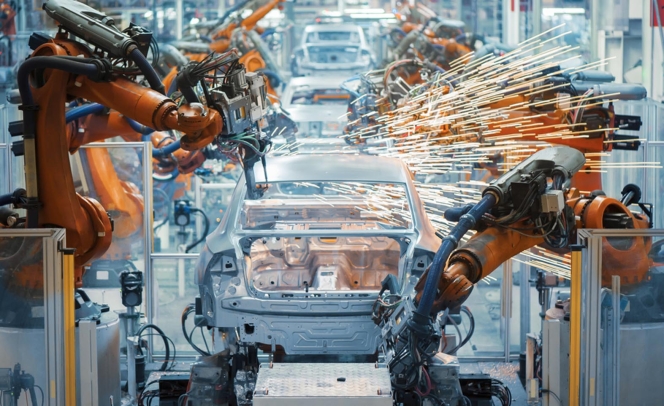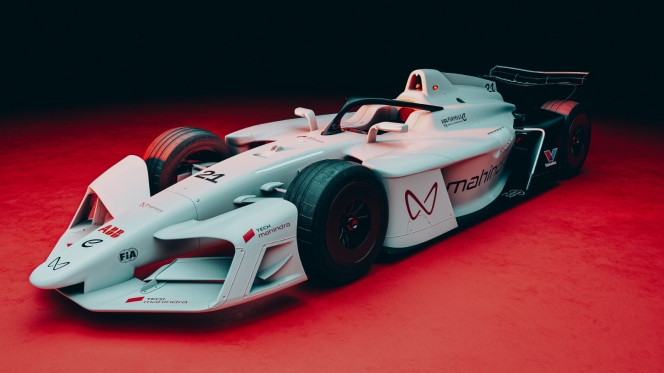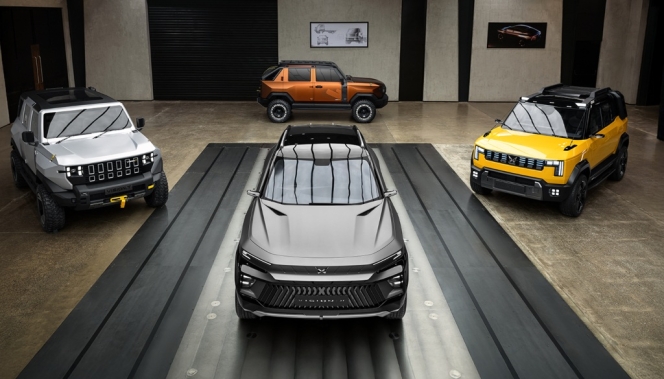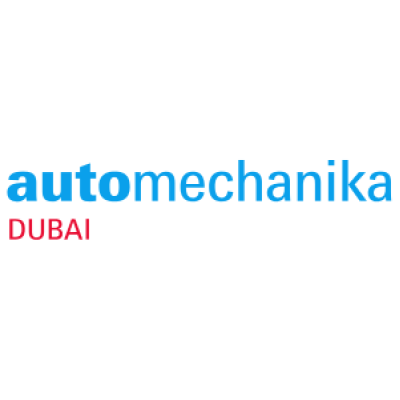- voice
- India
- car market
- staring
- stagnancy
- selling
- foreign investors
- stock market
- decline
- issues
- structural
- geopolitical
- local
- global
- auto industry
- largest contributor
- GST
- exchequer
- local
- global
- nature.
Rough Road Ahead For the Indian Auto Industry?
- By Bhushan Mhapralkar
- March 12, 2025

The voice about India’s car market staring at stagnancy is growing amid much selling by foreign investors in the stock market. Auto sticks of OEMs and suppliers have taken a beating lately. The reasons for stock market decline are said to be structural issues as well as geopolitical issues. In other words, they are local as well as global in their nature. The Indian auto industry – as the largest contributor of GST to the exchequer and among the highest contributor to the country's manufacturing GPD – is also quite local and global in its ways of working.
Like any other developing nation, it is a market where the scope for an increase in automobile population is bright. It is also a market that is beset by structural issues nonetheless. With 34 cars owned per 1,000 people, the country with a population estimated to be 1,463,865,525 in 2025 has ample scope for auto sales growth.
But as banks struggle for liquidity and a reduction in repo rate by the apex bank fails to reflect in the reduction of loan interest rates or equated monthly instalments, the structural issues facing the automobile industry are too stark to overlook.
Adding to the structural issues are perhaps developments such as the recent announecement by Maharashtra Government to levy six percent motor vehicle tax on premium electric vehicles. The leading industrialised state also has among the highest road toll taxes among other Indian states. The highway network in the state is among the most lacking and unsafe. Most roads in the state have either deteriorated or are under a seemingly unending period of repairs.
The state government in its 2025 budget has also announced that it has raised the motor vehicle tax by one percentage point on individual-owned non-transport four-wheeler CNG and LPG vehicles. Such vehicles currently attract a seven to nine percent tax depending on their type and price.
While electricity costs have been rising with distribution companies like MSEDCL pushing for a revision in fixed and energy charges for various categories in order to bridge revenue gap, owning electric vehicles and CNG vehicles is becoming costlier though eco-friendlier.
Attracting over 200 percent in taxes, petrol and diesel prices have been at an all-time high. A timely upward revision in toll prices is only adding further to the cost of motoring in a country where close to or more than 50 of the vehicle purchase price amounts to taxes. Spares are also taxed at a hefty 28 percent and the labour costs have steeply risen post Covid-19 pandemic.
With vehicle prices being jacked up by automakers under the pretext of rising input costs by about four to five percent if not more, the Indian auto industry is clearly under pressure to maintain its margins and stay profitable.
Against the operating costs, the foot falls in the showroom are taking longer to realise into actual sales. Discounts are gaining speed and indicative of sales losing stream in some of the segments that were until recently doing very well.
Any excitement about a rebate in Income Tax up to INR 1,200,000 – it takes over INR 1,000,000 to purchase a decent car in India today – seeming to have faded into thin air, the talk about government announced a reduction in GST taxes has gained speed. When it would actually come into effect is yet to be known but the narrative has started building. The stock market does not look excited however and the money lost by domestic investors may take a long time to come back, it seems.
As US President Donald Trump speaks about exposing India’s ‘wrong’ tariff policies in the absence of any statement from the Indian government striking out his claims, the Indian market for automobiles and other consumer goods looks destined for a rough ride. Stagnancy will be a part of the plot, the repercussions of which would stem from domestic structural issues as well as geopolitical shifts where calls like ‘China Plus One’ hold no value at all anymore.
With the entry of Tesla – which has seen its sales and stock prices plummet in many of existing markets off late – set to enter India with the government lowering tariff under pressure from the US President, the subject of too much regulation needs to be examined in terms of structural strength and the industry’s ability to be competitive. Local manufacture is also a subject that needs to be looked at as MSME sector continues to shrink and take down with it the PMI index.
Skilling is also a subject that should be looked at as engineering courses lose interest with the young in the country. A manufacturing-less economy that is also witnessing the services sector face a slowdown – again due to structural and geopolitical issues – may not spell a good omen for growth in the long run. This, particularly in the case of a country whose median age in 29 years.
China’s ‘Deep seek’ has shown how the prowess in technology can shift overnight and highly influence the economy of a nation, its stock markets suddenly. In India, the auto industry should nurture the MSME sector as much as the government should. A services alternative in terms of growth over manufacturing may not hold forth in the long-term. Manufacturing exports can shrink abruptly anytime under the shifting regulatory and other market issues in the domestic marketplace and under the shifting geopolitical situations in various parts of the world that also make lucrative export markets.
Image for representative purpose only.
- Hagerty UK
- Vehicle Excise Duty Exemption
- VED Exemption
- Historic & Classic Vehicles Alliance
- Classic Cars
UK Chancellor Maintains Vehicle Excise Duty Exemption For Classic Cars
- By MT Bureau
- November 27, 2025

The UK's cherished classic car community can finally breathe a collective sigh of relief. The decisive action by Chancellor Rachel Reeves in the Autumn Budget to maintain the Vehicle Excise Duty (VED) exemption for vehicles over 40 years old has ended a prolonged period of uncertainty, securing a stable future for this vital sector. Mark Roper, Managing Director of Hagerty UK, welcomed this clarity, noting that the confirmed freeze on fuel duty further solidifies a supportive environment for owners. He underscores that this is a significant win for the GBP-7.3-billion industry that supports over 100,000 jobs and contributes GBP 3 billion annually to the UK economy, all while championing an inherently sustainable form of motoring.
This perspective on sustainability is reinforced by Dale Keller, CEO of the Historic & Classic Vehicles Alliance (HCVA), who affirms that the tax exemption logically aligns with environmental objectives. Classic vehicles, preserved as moving heritage, have a negligible lifecycle carbon footprint compared to new manufacturing and are driven infrequently. The original principle of the exemption remains valid, as applying a modern tax to these rarely used assets would be inequitable.
Alongside the VED news, the Chancellor confirmed the continuation of the MOT exemption for classic cars, though this will remain under review. On this point, Roper of Hagerty UK strikes a note of caution, observing that many within the industry advocate for an annual roadworthiness check. He notes that a great number of responsible classic owners voluntarily submit their vehicles for an MOT each year, valuing the independent assurance of safety and mechanical integrity it provides.
For Hagerty UK, as a specialist insurer deeply embedded in this world, the government’s affirmation is a powerful endorsement of the sector's cultural and economic value. Through its vibrant Clubhouse at Bicester Heritage and unique events like RADwood, Hagerty is actively fostering this passionate community. Similarly, the HCVA continues its mission to protect and promote the diverse ecosystem of specialists, restorers and businesses that form the backbone of this multi-billion-pound industry, ensuring its legacy for generations to come.
Mahindra Racing Extends Formula E Involvement With GEN4 Manufacturer Commitment
- By MT Bureau
- November 26, 2025

Mahindra Racing has solidified its long-term future in electric motorsport by confirming its manufacturer commitment to the GEN4 era of the ABB FIA Formula E World Championship, starting in 2026/27. This announcement, made during the unveiling of its new M12Electro race car in India, extends a relationship that began in 2013 when Mahindra stood as both a founding team and the first OEM to join the all-electric series.
The team's current trajectory underscores the significance of this pledge. Following a dramatic 18-month transformation under CEO and Team Principal Frederic Bertrand, Mahindra Racing has evolved from a backmarker into a consistent front-runner. This resurgence was powered by the redesigned M11Electro, in which drivers Nyck de Vries and Edoardo Mortara collectively secured five podium finishes in Season 11, catapulting the squad to a stellar fourth place in the world championship. The newly launched M12Electro is the intended vehicle to maintain this status as a top-five contender and a regular threat for podium positions in the forthcoming season.
The technical landscape for GEN4 promises to further electrify the sport. The next-generation cars will boast a peak race power of 450 kw, with a potent 600 kw available in ATTACK MODE to empower aggressive overtaking. Enhanced strategic possibilities will come from a race energy capacity of up to 55 kWh and a remarkable 700 kw of regenerative braking. In a continued commitment to sustainability, the GEN4 chassis will be produced from 100 percent recyclable materials and will feature two distinct aerodynamic configurations – high-downforce for qualifying and low-downforce for races – to optimise performance.
Mahindra's ambition is to leverage this new regulatory chapter to build on its renewed momentum, chase incremental gains and establish itself as a confirmed championship contender against elite manufacturers like Porsche and Jaguar. This competitive platform also serves a broader purpose, aligning with the Mahindra Group’s sustainability initiatives. The team, the first in Formula E to earn the FIA’s Three-Star Sustainability Accreditation, has embarked on its ‘Planet Positive’ programme. This initiative is dedicated to driving positive impact in communities and economies, accelerating climate solutions and using the intersection of sport and technology as a catalyst for a better future.
R Velusamy, Chairman, Mahindra Racing, said, "Mahindra Racing has always been a symbol of our commitment to the Race to Road journey – where cutting-edge innovation on the track directly shapes the clean, intelligent and high-performance mobility solutions we deliver to customers. Formula E is a powerful platform for innovating new technology, giving us the ability to experiment, learn and advance electric powertrain efficiency, sustainable materials and software intelligence. As we step into the GEN4 era, our ambition only grows stronger. Continuing this journey till 2030 is a testament to our belief in the sport, in electrification and in India’s role in leading global sustainable mobility. We are proud to champion this future, and GEN4 represents an exciting new chapter for Mahindra Racing and the Mahindra Group.”
Frederic Bertrand, Team Principal, Mahindra Racing, said, “I’m delighted to share this announcement that Mahindra Racing will remain in Formula E as a manufacturer for the GEN4 era. As a team, we have been on a fantastic journey over the past two seasons. What we have built and achieved as a group has been exceptional, and with this announcement, we now have the platform to keep growing and developing and achieve even greater success in the future. None of this would be possible without our colleagues across the Mahindra Group. They have bought into the project and the vision, and we will keep working hard to not only make India proud but also showcase exactly why it has the potential to be a major player on the world stage in the automotive and technology industries. Their enthusiasm to ‘Scream Electric’ is hugely inspiring to the whole team, and we will continue to represent them with pride in this next exciting chapter of our Formula E story in the coming years.”
Jeff Dodds, CEO, Formula E, said, “We’re thrilled to confirm Mahindra’s long-term commitment to the GEN4 era of the ABB FIA Formula E World Championship. As one of our founding teams, Mahindra has been with us since the very beginning, consistently championing electric racing and innovation. Their bold vision for sustainable mobility and continued investment in advanced EV technology perfectly align with Formula E’s mission. Mahindra’s enduring presence not only strengthens our position in a key market but also reinforces Formula E’s role as a global platform for driving positive change. We’re excited to see what they’ll achieve in this next chapter of performance and progress.”
Marek Nawarecki, Senior Circuit Sport Director, FIA, said, “Following the GEN4 reveal and the really positive sentiment reported, we are pleased to announce Mahindra as the sixth manufacturer to commit to Formula E’s GEN4 era. This is testament to the relevance of the road map we are implementing in Formula E for OEMs. GEN4 underscores just how far the ABB FIA Formula E World Championship has come since 2014 and we are looking forward to continuing this journey with Mahindra as one of the founding teams and partners.”
Mahindra Charts Aggressive Decade Of Growth Across Auto, Farm, CV And Last-Mile Mobility Businesses
- By MT Bureau
- November 21, 2025

Mumbai-headquartered conglomerate Mahindra Group has unveiled an ambitious long-term roadmap across its core mobility and equipment businesses, detailing plans for accelerated growth in the automotive, farm equipment, commercial vehicle and last-mile mobility segments.
The strategy, presented at its Investor Day 2025, underscores the Group’s intent to leverage India’s expanding economy while deepening global market participation.
Mahindra expects its consolidated automotive business to grow 8x between FY2020 and FY2030, driven primarily by a stronger push in sports utility vehicles (SUVs) and light commercial vehicles (LCVs).
The company aims to become the world’s fastest-growing SUV brand. Its product strategy is rooted in new-age platforms such as INGLO and NU_IQ, enhanced digital architecture under MAIA and Adrenox, and continued investment in safety and performance.
At present, Mahindra holds more than 26 percent revenue share in India’s SUV segment as of the first half of FY2026. Strong consumer traction for models including the Thar, XUV700, XUV3XO and the Born Electric (BE) series is expected to support the company’s international expansion to right-hand-drive and left-hand-drive markets across Europe, Australia, Africa and other regions.
Strengthening leadership in LCV segment
The LCV business, where Mahindra commands 54.1 percent volume share in vehicles under 3.5 tonnes (as of H1 FY2026), is set to be another pillar of growth. The product range has broadened through the Supro, MaXX and Veero platforms, including CNG and electric variants. The company is also preparing for wider adoption of lifestyle pickups, led by the upcoming Global Pik Up.
Mahindra’s LCV strategy emphasises best-in-class total cost of ownership, reduced downtime, enhanced comfort and technology integration, with the segment also targeted for eightfold revenue growth during the decade.
Farm business
Mahindra, the world’s largest tractor manufacturer by volume, has outlined plans for threefold revenue growth in its farm equipment division between FY2020 and FY2030.
The Indian tractor market has continued to shift towards higher horsepower models, particularly in the 40–50 HP range. Mahindra aims to consolidate share in this segment through newer platforms including Yuvo Tech+, Swaraj Protek and Next-Gen ranges. Improvements in crop profitability and a more favourable price environment for tractors are expected to support industry expansion.
Mechanisation levels in India remain uneven, with significant headroom in sowing, crop care and harvesting equipment. Mahindra is expanding its farm machinery portfolio while leveraging its extensive dealer network and manufacturing footprint. The division, already a business exceeding INR 10 billion, is poised for rapid scaling.
Mahindra continues to build presence in key global markets:
- Brazil: 8 percent share in the sub-120 HP category, and about 20 percent in sub-50 HP
- North America: more than 10 percent share in sub-20 HP; upcoming launches to deepen penetration
- ASEAN: early progress with about 4 percent share in pilot territories
Electrification, autonomy, precision agriculture and pay-per-use technology services form the next frontier for Mahindra’s farm business.
Targeting Top-Three Position in ILCVs
Following the acquisition of SML Isuzu, Mahindra is advancing a strategy to be among the top-three player in India’s intermediate and light commercial vehicle (ILCV) market. The domestic CV industry is projected to grow from approximately INR 15,000 billion in FY2025 to nearly INR 20,000 billion by FY2031, supported by infrastructure development, logistics modernisation and GST-driven reforms.
Mahindra aims to expand its presence in ILCVs, while pursuing a selective play in the heavy commercial vehicle category. The strategy benefits from combined advantages across product development, sourcing, aggregates, telematics and network coverage. The company expects up to sixfold revenue growth in its CV business during the decade.
Last-Mile Mobility
Mahindra Last Mile Mobility (MLM) is shaping an aggressive electrification-led growth plan, targeting sixfold revenue expansion and a cumulative one million electric vehicles on the road by 2031. EV sales climbed to 78,678 units in FY2025, led by the Treo series, which remains India’s top-selling electric three-wheeler.
The division has:
- Strengthened its engineering capabilities with a 400-member product development team
- Commissioned a new state-of-the-art manufacturing plant in Telangana
- Expanded production capacity two-fold
- Developed proprietary battery, motor and telematics systems
The product roadmap includes advanced electric three-wheelers and electric four-wheelers tailored for last-mile applications, along with plans to expand exports to more than ten markets. Mahindra’s EV fleet has cumulatively saved over 300 million litres of fuel and prevented more than 185 kilo tonnes of carbon dioxide emissions.
Across all mobility segments, Mahindra’s plan is anchored in product leadership, technology integration, capital discipline and global expansion. A stronger focus on electrification, platform consolidation, digital interfaces, manufacturing efficiency and customer-centric service models is expected to underpin the Group’s growth trajectory.
- Murugappa Group
- Arunachalam Vellayan
- Coromandel International
- EID Parry
- EXIM Bank
- Kanoria Chemicals & Industries
- Indian Overseas Bank
Murugappa Group’s Former Chairman Arunachalam Vellayan Passes Away At 72
- By MT Bureau
- November 18, 2025

Chennai-based conglomerate Murugappa Group has announced the passing of Arunachalam Vellayan (1953–2025) following an illness.
Vellayan was the Chairman Emeritus of Coromandel International and the Former Chairman of the Murugappa Group. He is survived by his wife, Lalitha Vellayan, his sons, Arun Vellayan and Narayanan Vellayan, and his grandchildren.
The Former Chairman dedicated several decades to the Group, providing strategic direction across its businesses. His approach to value creation helped strengthen and expand the Group, contributing to its reputation as a respected conglomerate.
He served on the Boards of various Murugappa Group companies, including as Chairman of Coromandel International and EID Parry.
Outside the Group, he served on the Boards of entities such as Kanoria Chemicals & Industries, EXIM Bank and Indian Overseas Bank.






Comments (0)
ADD COMMENT